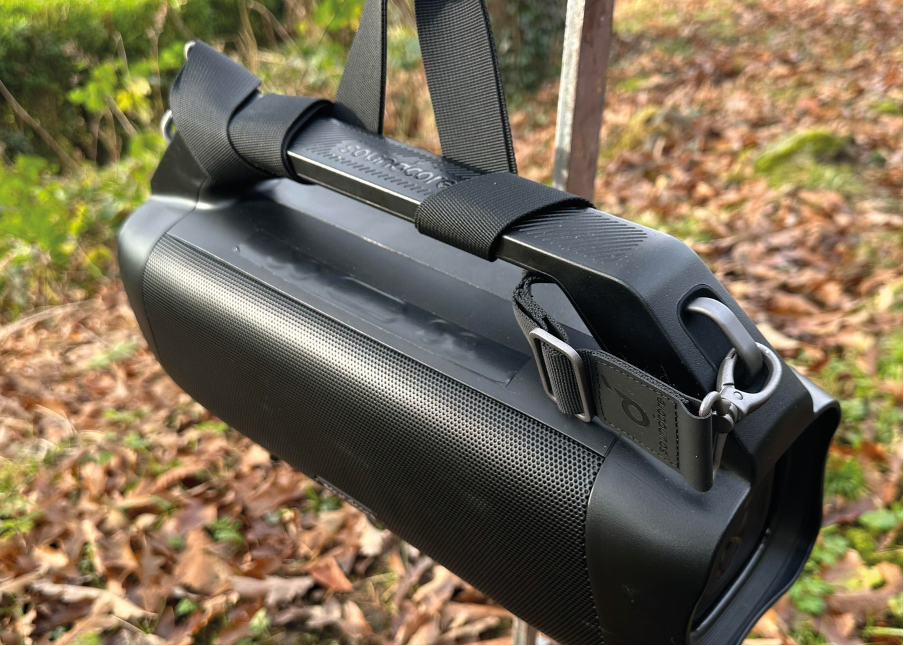DIY fox caller
Paul Austin gets creative with a home-built fox caller that really hits the mark when it comes to sound quality, range and flexibility – and all at an impressively low price

A couple of months ago I was out foxing. The plan was to set an ambush among a large group of bales in an otherwise empty field. On arrival, however, the bales were gone and the plan was derailed.
Plan B involved deploying the caller a fair distance out and retreating to the hedge line. Alas, this was also a disappointment as there was no sign of Charlie, so we eventually upped sticks and moved to a new location, inadvertently leaving the caller behind.
It was perhaps a week or two later, after searching all the usual storage spots for the missing caller, that the penny finally dropped – I’d left it somewhere, but where?
It was Aled, the farmer’s son, who made the grim discovery. It was clear that this particular caller had voiced its last squeak. Although there had been no stock in the field at the time the caller was left, cattle had soon arrived. The cows, being curious creatures, had wasted no time finding the caller and inaugurating their first bovine five-a-side tournament, with my caller as the ball.
The Googling began.
£250 seemed like a lot of money for what is essentially a one-trick pony. There had to be a better way, or at least a viable alternative.
About 10 years ago I had tinkered with the idea of a Bluetooth solution, but the range was pitiful. If I retreated more than 10m from my original Bluetooth outdoor speaker it all fell apart with crackly audio and constant disconnections. However, Bluetooth has come a very long way since then and there are already some smartphone and Bluetooth caller combinations on the market.
I still wasn’t too keen on the expense of a traditional caller, although I did rather like the idea of ditching the traditional remote control. So why not invest in a powerful Bluetooth speaker for all manner of musical shenanigans that could also double up as a caller?
Online Shopping
After a bit of research, Amazon came to the rescue in the form of the Motion Boom Plus. There’s a whole host of portable outdoor speakers in the Anker/Soundcore line-up – modern-day boom boxes essentially.
Two of them caught my attention – the Plus and its predecessor, the Motion Boom. Both seemed to fit the bill, but I chose the former as it tipped the balance in terms of overall audio quality, perhaps at the expense of being slightly larger than I’d ideally like.
Both models are 100% waterproof, and the standout feature of the Plus model is that it’s not only IPX6 rated but will even float on water – not a feature I’m in any rush to test, I might add.
Because both models are black and have minimal lights, they’re completely covert with the addition of a short strip of electrical tape to obscure a couple of glowing buttons on the control panel. As control isn’t required on the device itself, other than hitting the power button, masking the control panel isn’t a problem. Everything is managed via your phone and an accompanying app.
Sample Selection
Being a bit of a nerd/audiophile, I used Adobe Audition for manipulating my samples, but free options such as Audacity (available on iOS and Windows) will be more than enough for most people.
The internet is awash with sound samples once you start looking. There are plenty of free audio download sites, but one of the simplest options is to rip audio from YouTube channels. The easiest way to do this is to find a track or video you like and then replace the first part of the URL so that it reads https://yout.com/ – you basically just delete the ‘ube’ bit from the YouTube domain name – and hit return. This will take you straight to a website that will strip the audio for you. There’s an option for higher bit rates if you subscribe, but try it as is initially.
To be honest, if you’re a bit of a technophobe all this file processing and sample editing might seem a bit too much hassle, and certainly for some people the ease of use of a traditional caller might be a better option.
But if, like me, you enjoy tinkering on a PC when it’s too wet or cold to get out on your ground, then the whole process makes for quite an interesting little project.
Loop the Loop
So once you have the speaker and the samples. How do you play them?
My choice for this was GarageBand. This app comes preinstalled on an iPhone, so it’s free and, as it turns out, very functional.
There are two modes in GarageBand: Live Loops and Tracks. As the name suggests, the Loop option takes any sample or group of samples and keeps repeating them, which is just what I need.
I simply drop samples into separate slots in the timeline, click whichever one I want to play, and it keeps repeating until I select another or hit stop.
This works perfectly for my little caller project and has the added advantage of taking a traditional caller’s remote control out of the equation. I never go anywhere without my phone, so there’s one less piece of kit to drag around – or, worse still, leave at home.
As the volume control on the phone manages the speaker output, you can simply trigger the sample and then reach into your pocket to adjust the volume without even taking the phone out.
There are plenty of loop players available for Android phones, but as I’m an Apple guy, GarageBand is the perfect solution for me but I’m sure the Google Play Store will offer a suitable solution.
What’s the Range?
Obviously I wouldn’t have got this far into the article if the control range was poor, but I’ll be honest – I was shocked and pleasantly surprised.
My iPhone and Motion Boom Plus combo was still playing back perfectly and remained instantly controllable up to 130m away while maintaining line of sight. That’s more than double the typical 50–60m at which I usually deploy a caller in the field.
As you can see from the photographs, I deploy the speaker on a target stand in the field, courtesy of the handy carrying strap that ships with the Motion Boom Plus.
If you need extended range, raising any caller off the ground is a wise move, although a fence post or tree limb works equally well – assuming there’s one to hand, obviously.
And Finally
I paid £99.99 for the speaker from Amazon and everything else was free – not a bad price for a powerful 80W device that offers 20 hours of runtime and can even work as a charger for your phone if needed.
It makes an excellent fox caller that can do a lot more besides.
Related Articles
Get the latest news delivered direct to your door
Subscribe to Rifle Shooter
Elevate your shooting experience with a subscription to Rifle Shooter magazine, the UK’s premier publication for dedicated rifle enthusiasts.
Whether you’re a seasoned shot or new to the sport, Rifle Shooter delivers expert insights, in-depth gear reviews and invaluable techniques to enhance your skills. Each bi-monthly issue brings you the latest in deer stalking, foxing, long-range shooting, and international hunting adventures, all crafted by leading experts from Britain and around the world.
By subscribing, you’ll not only save on the retail price but also gain exclusive access to £2 million Public Liability Insurance, covering recreational and professional use of shotguns, rifles, and airguns.
Don’t miss out on the opportunity to join a community of passionate shooters and stay at the forefront of rifle technology and technique.




